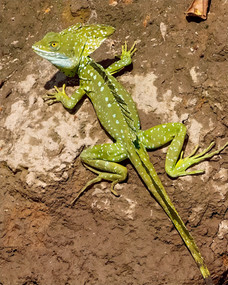Exploring the Ecological Wonders of Costa Rica's Diverse Regions
- dcwhited@gmail.com
- Sep 8
- 4 min read
Costa Rica, a small country in Central America, is renowned for its stunning landscapes and rich biodiversity. With nearly 28% of its land designated as protected areas, it serves as a refuge for countless species and a paradise for eco-tourists. In this blog post, we will explore the various ecological regions of Costa Rica, showcasing the distinct flora and fauna that thrive in each area. In the Spring of 2025, I spent 10 days exploring the length and width of the amazing tropical wilderness with a group of 12 birders. Our focus was birds, but it was impossible to ignore the abundance and variety of other wildlife along with the incredible ecosystems they inhabit. I did my best to photograph them all, but ten days just wasn't enough.
Below are a few of my favorite photographs. Click the links below to view more.
Please click the following links to see more of my images.
More about Costa Rica's ecosystems
Costa Rica is a relatively small country in Central America. It is only 19,700 square miles (51,100 square kilometres) in area, comparable to the size of West Virginia in the USA or Denmark in Europe. Within that area, though, there are a dozen different ecosystems, ranging from tropical lowland rainforest to coral reef, and 25% of the land and water of those ecosystems are protected as wildlife reserves, refuges, and national parks. Costa Rica is on the top 20 list of the most biodiverse countries in the world. Below is more about a few of the land-based ecosystems and the country's incredible efforts to protect them.
Mangrove Forests
Mangrove forests are located along Costa Rica's Caribbean coast. These ecosystems are marked by salt-tolerant trees that flourish in brackish waters. Mangroves play a vital role in protecting coastlines, preventing erosion, and offering habitats for various species, such as fish, crabs, and birds.
The biodiversity in these forests is astonishing. For instance, migratory birds like the reddish egret rely on the mangroves for nesting and foraging grounds. Additionally, the roots of mangrove trees provide refuge for juvenile fish, which are critical for maintaining healthy fish populations. Exploring these forests reveals the delicate balance of relationships among species and their habitats.

Tropical Rainforests
Tropical rainforests represent one of the most iconic ecological regions in Costa Rica. These lush habitats are characterized by tall trees, dense undergrowth, and an impressive variety of wildlife. They serve as home to howler monkeys, sloths, and over 400 species of birds, making them a must-visit for nature lovers.
The climate here is warm and humid, with annual rainfall averaging around 3000 mm. This environment supports an incredible diversity of plant life, from towering trees to vibrant orchids. Hiking through these forests can be awe-inspiring as each step reveals the sounds of wildlife and the dazzling colors of the flora.

Dry Forests
In contrast to the vibrant tropical rainforests, Costa Rica's dry forests are found in the central valley and parts of the Northwest Pacific coast. These forests receive less than 2 meters of rainfall per year, leading to a unique ecosystem populated by different wildlife.
During the dry season, many trees lose their leaves, creating a striking landscape. Despite the arid conditions, these forests host various species, including howler monkeys, iguanas, and numerous birds like the white-tailed kite. Visiting these forests provides a glimpse into nature's resilience and the unique adaptations species develop to survive.

Highland Forests
Highland forests, found at elevations above 1,500 meters, provide a distinct ecological experience. These evergreen forests are cooler and showcase unique plant life, including majestic oaks and various ferns. The highland regions are also a hotspot for endemic species, which adds to their biodiversity.
The rich soil and cooler climate here support wildlife such as the resplendent quetzal. This stunning bird is famous for its colorful plumage. Hiking in the highlands offers breathtaking views and a peaceful escape from the more trafficked areas of Costa Rica.
Wetlands
Wetlands are yet another critical ecological region in Costa Rica, encompassing rivers, marshes, and seasonally flooded woodlands. These shallow-water ecosystems are essential for supporting biodiversity, providing nesting and foraging grounds for various waterbirds and other wildlife.
The wetlands teem with life—from amphibians to fish—and play an important role in water purification and flood control. Birdwatching in these areas is particularly fruitful, as many migratory species, such as the great blue heron, stop here during their journeys.
Conservation Efforts
Costa Rica’s dedication to conservation is evident in its extensive network of protected areas. The country boasts 26 national parks, wildlife refuges, biological reserves, and indigenous reserves that safeguard its diverse landscapes for future generations.
Various organizations and the government work diligently to protect these habitats while promoting sustainable tourism and environmental education. Visitors can engage in eco-friendly activities, such as guided nature walks and birdwatching tours, which contribute to ongoing conservation efforts.























Comments